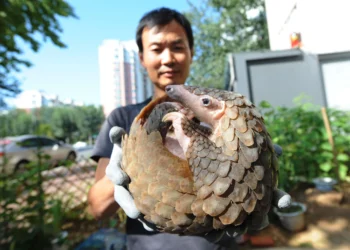It’s hard to imagine our beloved furry friends getting sick or even dying due to something as simple as flowers, but the truth is, it happens.
The Dangers of Toxic Flowers: Surprising Statistics
According to the ASPCA, over 5,000 cases of toxic plant ingestion in pets are reported each year, with lilies, tulips, and daffodils being among the most commonly ingested flowers.
Reading Suggestion: Are Cat Water Fountains Safe?
Toxic Flowers to Watch Out For
Now that we know the dangers of toxic flowers, let’s take a look at some of the most dangerous plants for cats and (smaller) dogs. It’s important to note that this list is not exhaustive and that if you’re ever unsure about the safety of a flower it’s always best to err on the side of caution.
Lilies
To everyone’s surprise, lilies are among the most toxic flowers for cats. Mind-bogglingly, even the pollen from a lily can be fatal if ingested by a cat. If you have cats, it’s best to avoid having lilies in your home or garden altogether.
Tulips
You probably already know that tulips are beautiful springtime flowers – but what you may not know is that their bulbs contain toxins and can lead to some serious health issues for your pets, like vomiting, diarrhea and even seizures. This is why it’s best to keep these flowers out of reach to avoid any accidental poisoning.
What’s often overlooked by many is that there are pet-friendly alternatives you can plant instead, like marigolds, sunflowers or zinnias – not only will you be able to enjoy some lovely blooms, but you’ll also be keeping your pets safe and happy. Believe it or not, even something as simple as changing the flowers in your garden can make a big difference in the health and wellbeing of your pets.
Two other flowers to watch out for are oleander and dieffenbachia; currently there is a debate about whether or not dieffenbachia is harmful to cats; and because this remains a grey area, some pet owners may wonder ‘are dieffenbachia toxic to cats?’
But one thing that’s for sure is that if your cat ingests the sap from this plant, it can cause swelling and irritation in their mouth and throat. The jury may still be out on whether dieffenbachia is toxic or not – but better safe than sorry! Oleander however without a doubt has been deemed toxic to pets.
Reading Suggestion: Best Cat Breeds for Beginners: a Comprehensive Guide to Choose
How to Keep Them Safe from Toxic Flowers
As pet owners we must take steps to ensure our beloved animals are kept safe from toxic flowers. Simply keeping them out of reach isn’t enough; pets are resourceful and may find a way around this! Consider planting pet-friendly flowers such as sunflowers, zinnias or petunias instead.
Needless to say, it’s important to remember that something as seemingly harmless as a dainty flower can be so hazardous for our pets – so why not do our part by educating ourselves on the potential dangers posed by toxic flowers and take steps to protect our beloved animals?









